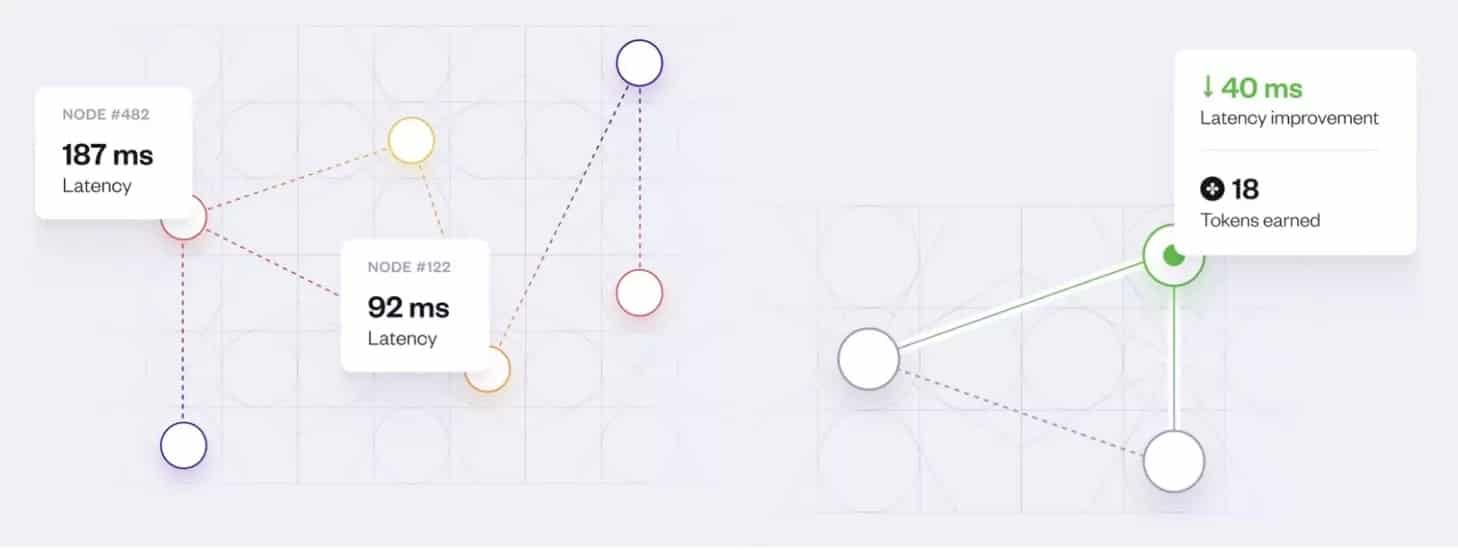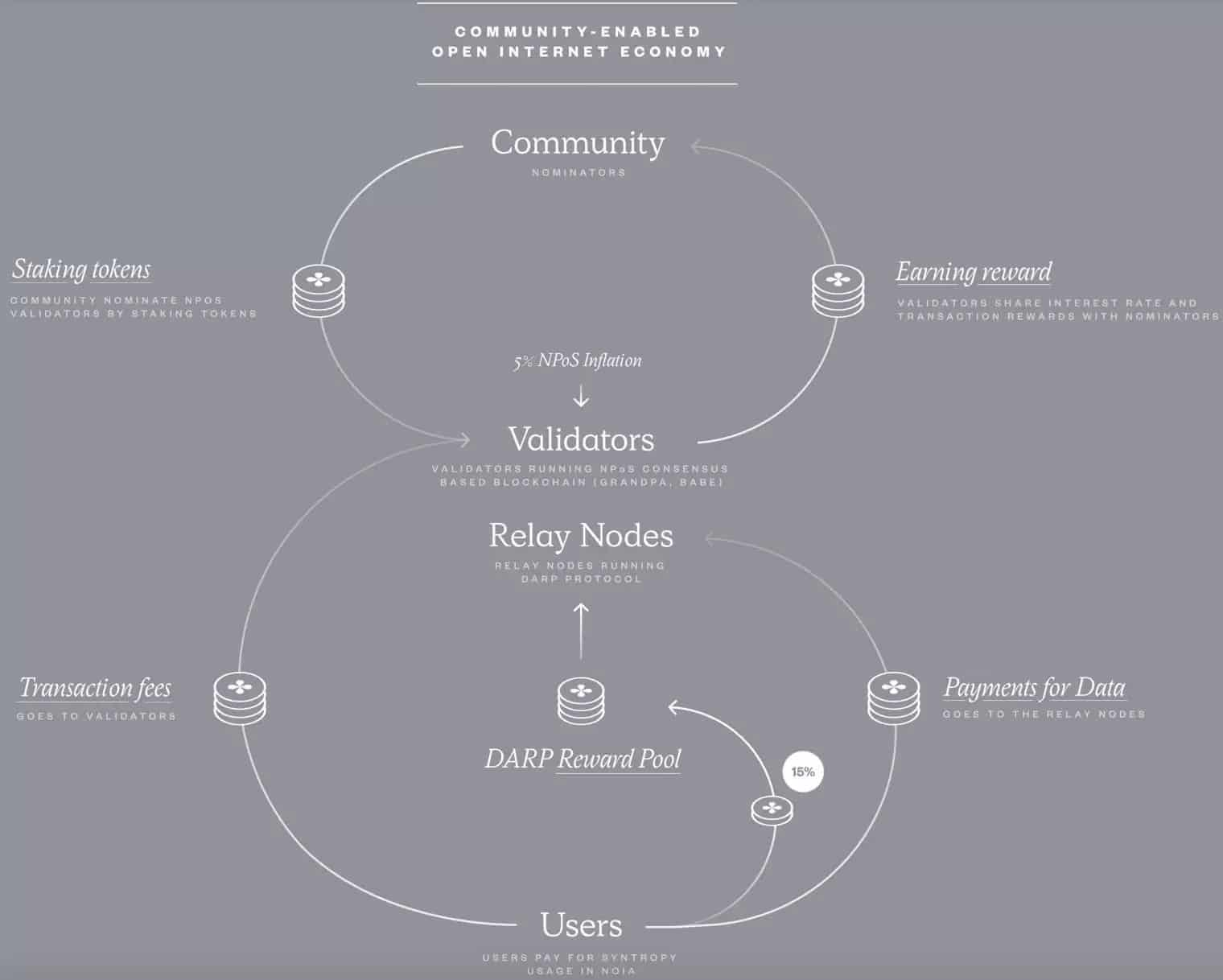Syntropy is designed to solve the problems prevalent in the current Internet framework, including security, privacy, governance, performance, reliability and inefficient use of resources. Learn more about Syntropy’s technology, its DARP protocol, its NOIA governance token and how you can help make it work
An update on the current functioning and economics of the Internet
A little history
Although the Internet is ubiquitous in our daily lives, it is not necessarily understood by everyone. Invented and set up in the 1960s, its objective was to form a net linking all computers. Thus, if one of the links broke, the entire network continued to function.
Although we often contrast the ‘digital’ world with the ‘physical’ world, the Internet is based on real, concrete infrastructure. To make it work, you need machines (computers), undersea cables to connect the different continents and data centres to store the data.
Over the past four decades, these infrastructures have been somewhat developed and optimised. However, the demand for traffic has accelerated considerably, as has the quality of the services offered. Social networks, the Internet of Things (IoT), high definition YouTube videos and streaming have all contributed to an exponential increase in demand.
At the same time, infrastructures are becoming more complex with the arrival of the multicloud, 5G mobile networks, etc. Finally, more and more optimisations are required to meet the growing need for Internet performance. The problem is that the Internet is a network that is optimised for cost, not for performance
The economics of the Internet
To understand this issue, you have to understand how the Internet works. When you do a search on Google, your Internet Service Provider (ISP) is responsible for sending you to the network. Then your request goes through various paths to Google’s servers, which then send the information packet back to you.
Initially, the Internet was designed to optimise performance and find the fastest way to make your request. In reality, ISPs are forced to respond to another issue: cost reduction. In other words, they will connect you to the cheapest path, even if it is not the fastest.
In short, the Internet is becoming congested while daily demand is increasing. Faced with this situation, and based on blockchain technology, Syntropy wants to build a new economic model for the Internet, allowing its use to be adapted according to the user’s needs.
Syntropy, bringing order to the Internet
To understand how Syntropy works, you must first understand the principle of entropy. This thermodynamic concept characterises the degree of disorganisation, or unpredictability, of a system. In other words, it is a law that reflects the general tendency of the universe to tend towards complexity, towards chaos.
Thus, Syntropy is defined as the inverse of entropy. If entropy is chaos and randomness, syntropy is order, harmony, symmetry and balance. This is exactly what Syntropy tries to bring to the current organisation and functioning of the Internet.
Of course, this technology is compatible with the current Internet infrastructure and its protocols, but it adds an additional layer, which can be programmed and adapted according to the use case. In this way, Syntropy aims to remove the current Internet congestion and limitations, reorganising the way the Internet works and thus unlocking greater scalability potential for future technologies and applications.
Syntropy’s solution is based on a combination of technologies including blockchain, encryption and optimised routing, including artificial intelligence (AI), and a business model that enables and promotes the deployment of its architecture.
How does Syntropy work in concrete terms?
The DARP technology
Decentralized Autonomous Routing Protocol (DARP) is the decentralized autonomous routing protocol used by Syntropy to optimize the data path on the Internet. Each computer connected to the DARP network (e.g. your own) is continuously involved in its operation. It is called a node.
The operation of the DARP protocol is very simple. Each node constantly measures information about the latency of the Internet. This maps the state of the network paths. If a node offers a faster alternative, then it will be used as a relay and then rewarded with the NOIA token.

If your node provides a faster path, you are rewarded with NOIA tokens
However, latency is not the only thing measured. The protocol allows the best path to be chosen based on a variety of criteria: lower latency, lower jitter, higher throughput, lower packet loss, lower power consumption, etc. Instead of what the Internet offers by default, DARP chooses the best option from a comprehensive matrix of paths.
In short, each computer can make part of its storage space available to become a fully-fledged data centre connected to the DARP protocol. And the technology doesn’t stop there, because by exploiting a layer of artificial intelligence, the protocol optimises the type of data to be stored on your computer according to the type of data consumed around your location. As a result, the data flows much faster.
The NOIA governance token
At the heart of how Syntropy works is the NOIA token. Described as the gas that powers the network (as ETH can with Ethereum), it facilitates connections and data transfers. In other words, it gives global value to the information communicated through Syntropy’s Web 3.0 ecosystem.
Its primary purpose is to reward users. When your computer participates in the operation of the DARP protocol and helps provide more efficient paths than those offered by the current Internet network, you are rewarded with NOIA tokens. It is an incentive for users to contribute to the smooth running of the network.
In its whitepaper, Syntropy attributes four main roles to the NOIA token:
- Establish end-to-end encrypted connections between nodes;
- Store and modify network configurations;
- Buy and sell bandwidth contracts (such as privatised paths);
- Routing data through the network.
This token, and more generally the Syntropy technology, is based on a parachain implemented on the Polkadot ecosystem (DOT). Based on a Nominated Proof-of-Stake (NPoS) consensus, it constitutes a basic governance layer to support the economy of the DARP protocol.
Here is a diagram summarising the overall functioning of the Syntropy Chain, coupled with that of the DARP technology:

The economy of the Internet is community-based
At the moment, Syntropy Chain is in a test phase, but will form the basis of Syntropy’s internet economy. At the moment, it is no longer possible to run validation nodes as the network has reached its 500 validators. However, you can still stake your NOIA tokens to generate interest and join the nominator community and its decision-making power.
Once the main network is launched, you will be able to move your tokens to nominate validators, start participating in the consensus and earn rewards on the main network chain.
With this technology, Syntropy intends to promote the decentralisation of the Internet and to build the network that will intelligently host the Web 3.0 solutions of tomorrow. The goal is to make the Internet a secure experience by adapting network usage to users’ actual consumption, and giving business and everyday users more flexibility to control their data.
